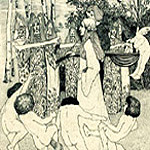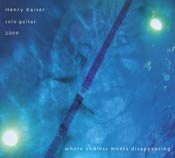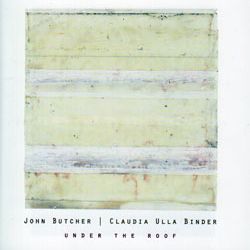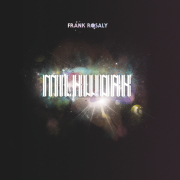Home » Jazz Articles » Multiple Reviews » Alone, Again (Naturally): Peter Brotzmann, Olaf Rupp, He...
Alone, Again (Naturally): Peter Brotzmann, Olaf Rupp, Henry Kaiser, John Butcher, Woody Sullender and Frank Rosaly
I was able to see Jenkins in a number of settings after that—solo as well as with his own groups and the reformed Revolutionary Ensemble. The interactions we had, though brief (I never interviewed him), I like to think helped set me on the road to writing about music, both as a historian and a critic. Exploring an artist's personal story, feelings, thoughts and personality are part of the interviewing process. Allowing musicians to speak without boundaries other than those that they set themselves is something akin to the practice of solo playing, and common to the unique brand of conversation that true oral histories espouse. Perhaps that brand of storytelling is why solo playing is so special, and personally it provided the window into what I felt I could contribute as a writer and fan of this music.
2009 produced a number of very interesting solo recordings of different stripes; whether any of them become as canonical as Jenkins' Solo Concert (India Navigation, 1977), Bluiett's Birthright (India Navigation, 1977) or a legion of other titles over the past half-century is anybody's guess. But the following discs by Peter Brotzmann, Olaf Rupp, Henry Kaiser, John Butcher, Woody Sullender and Frank Rosaly do attest to the strength and diversity of the solo idiom.
 Peter Brotzmann
Peter Brotzmann
Lost & Found
FMP
2009
It has been just over thirty years since German reedman Peter Brötzmann first recorded unaccompanied, on the LP Solo (FMP, 1976). His high water mark in the format is probably 14 Love Poems (FMP, 1984), with a rendition of Ornette Coleman's "Lonely Woman" that has to be heard to be believed. Lost & Found is a fitting return to the FMP stable on the label's 40th anniversary (a label he helped found), with five explorations on alto, tenor, clarinet and tarogato. "Internal Rotation" finds Brotzmann on alto, his initial trilling call familiar, halfway begging a frantic rhythm section save for the airy spaces in between his yelps and curled overblowing. He lets his horn fly, opening up the throttle and then subtly turns in on himself, questioning and quoting. Brotzmann's breathiness is shot through with both Coleman Hawkinsand Wuppertal metal in "Got a Hole in It," where his serrated purrs wrap around "Crepuscle with Nellie" and make real the case that he's at heart, a jazz player.
 Olaf Rupp
Olaf Rupp
Whiteout
FMP
2009
Guitarist Olaf Rupp, also German, is of a decidedly different ilk than that which gave birth to FMP and to the halcyon days of German free improvisation. Whiteout is his first entirely solo electric guitar recording in 10 years, though he has recorded acoustic guitar performances in the meantime. Visually, Rupp is a striking figure—stocky, shorn pate and holding his instrument upright under the influence of Chinese pipa players (or fellow plucker Uwe Kropinski). Rupp and Brotzmann could be considered complementary forces. They are both self-taught and despite the cultural baggage of being "European" and purveyors of "art music," a wistful, timeworn and bluesy sensibility emerges in the plaintive moments of both. Rupp's immense webs and clusters of bunged notes yield shimmering overtones, but after the excitement clears, it's the plaintiveness and soul of his phrasing, alternately scumbled and twanging, that acts as a warm sonic blanket.
 Uncle Woody Sullender
Uncle Woody Sullender
Live at Barkenhoff
Dead CEO
2009
Chicago-based banjoist Woody Sullender's work often abuts sound art, his overdriven plucking shattering hillbilly preconceptions and giving the instrument a devilishly vanguard bite. Live at Barkenhoff, his third disc, is much sparser in effect than previous outings and in its execution falls a bit farther from the free-improvisation tree. Augmented by electronics, "A Measure of Dasein" couples wiry, thin drones and clustered mallet-rhythms with quiet, forthright and traditionally spun improvised yarns. One would be hard pressed to align this particular solo with other open forms of string music—even as Sullender's notes harrow and run together with spittle and flecks befitting a reed player, a quick nod of the head to John Fahey's "Approaching of the Disco Void" is clearly evident. Though placing him in the wry lineage of American folk-blues string players (Fahey, Robbie Basho, etc.) is perhaps inappropriate (or incomplete), Sullender creates similar tensions by juxtaposing pure, immediate sound and delicately-woven fantasias of voided and pregnant reference.
 Henry Kaiser
Henry Kaiser
Where Endless meets Disappearing
Balance Point Acoustics
2009
Where Endless Meets Disappearing is guitarist Henry Kaiser's first unaccompanied outing on the Balance Point Acoustics label (operated by Bay Area improviser/bassist Damon Smith), and fifth in a series of recent works in free improvisation by this veteran of the West Coast scene. Kaiser is probably just as well-known, if not more so, for his focus in progressive rock and "ethnic" stews and, while one of the most technically masterful players in any idiom, his work in open music doesn't really garner as much attention as some of his free-playing peers. Part of the reason why Kaiser might be underrecognized in that context is that his approach to the instrument (especially now) rarely recalls forebears like Derek Bailey or Sonny Sharrock—rather, a melding of ragas a la Terry Riley and Basho (not to mention folk-blues and the subtle Americana whirligigs of Jerry Garcia) with an occasionally bitter fuzz, echoing Richard Thompson. Compared to the homage to Masayuki Takayanagi that makes up Plane Crash (ugExplode, 2009, with Damon Smith and drummer Weasel Walter), the intensity of these solos lies in their use of heavy atmospherics and stark simplicity in both melody and sound-on-sound. John Butcher
John Butcher
Resonant Spaces
Confront
2009
At the heart of Resonant Spaces is a soloist's take on sonic sculpture, in dialog with literal, locational space. English saxophonist John Butcher recorded this disc as part of a project that toured rural Scotland, capturing the sound of his tenor and soprano in an oil tank, beneath a reservoir, in a cave, in a mausoleum, and among the standing stones of Stenness. Butcher's tenor and miking process produce layered feedback and twittering batcalls on "Sympathetic Magic (stone)," where the arcs in the Hamilton Mausoleum bounce and curl, high above Butcher's paced, low breaths. Natural resonance, unaided by electro-acoustic layers, might sound the most "honest," and the orchestral flesh that builds around his circular soprano diving on "Calls from a Rusty Cage" approaches unbelievable heights and breadth. In some regards influenced by Evan Parker, Butcher's often clinical approach to skull-rattling overtones is given the comfort of an unpredictable monkey-wrench through engaging surroundings that are ever slightly mutable.
 Frank Rosaly
Frank Rosaly
Milkwork
Contraphonic
2009
Alongside solo saxophone or solo trumpet recitals, solo percussion workouts are among the most curious formats for invention in this music. It's also incredibly difficult to pull off an engaging slab of unaccompanied percussion, which is why the "good" ones stand out. Chicago-based drummer Frank Rosaly—a regular collaborator with such figures as saxophonist-composer Dave Rempis, trumpeter Josh Berman and vibraphonist Jason Adasiewicz—has really outdone himself on Milkwork, his vinyl-only solo debut. Admittedly, while Rosaly's sideman work has long been impressive, his penchant for subtlety might make one wonder what he'd come up with left to his own devices. The answer is a one-man dialogue of the drums, referencing the compositional approaches of Andrew Cyrille, Pierre Favre and Andrea Centazzo and colliding with minimalist phase-relationships and hip-hop scuffle. The first side emphasizes acoustic playing more greatly; the stone-skipping loop of "NY Prices" a loosely-wound series of rejoinders after the dense and fuzzy "Adolescence," while "Four Bright Red Dots" is a bodily merger of Central Africa and South Asia (indeed, "Zoquete," a multi-national celebratory procession, is one of the most captivating minutes on the set). Like all but one of the discs reviewed here, Rosaly's solo playing eschews category for a grand and highly structured sense of individuality.
Tracks and Personnel
Lost & Found
Tracks: Internal Rotation; Lost & Found; Universal Madness; Got A Hole In It; Turmoil.
Personnel: Peter Brotzmann: alto and tenor saxophones, clarinet and tarogato.
Whiteout
Tracks: Whiteout Parts 1-14.
Personnel: Olaf Rupp: electric guitar.
Live at Barkenhoff
Tracks: A Measure of Dasein; Where the Flowers on the River's Green Margin May Blow; Violence of Volk.
Personnel: Uncle Woody Sullender: banjo and electronics.
Where Endless meets Disappearing
Tracks: Where Endless meets Disappearing; Very Lush Waters; Topic A; At Two; I Would Ask; Maybe If Time; A Precise Kind of Infinity, a Sliver of Clarity Nestled; Wet Behind the Ears; Touch and Change Places; This Way and That; Feel You Contact Everything; Completely Won Over; As Stream, Hue, and Pressure Sound; Three Can Keep a Secret if Two Are Dead; Regarding Proximity; The Gate is That Way, not This; Yet Another Good Time to Be In; A Bloom of Tiny Suns.
Personnel: Henry Kaiser: electric and acoustic guitars.
Resonant Spaces
Tracks: Sympathetic Magic (stone); Calls from a Rusty Cage; Wind Piece; Floating Cult; Close by, a Waterfall; New Scapa Flow; Styptic; Frost Piece; Sympathetic Magic (metal).
Personnel: John Butcher: tenor and soprano saxophones, feedback and amplification.
Milkwork
Tracks: Adolescents; NY Prices; Four Bright Red Dots; Truce; Zoquete; NY Prices!; Calcetines; Burnshine; He Junkin.'
Personnel: Frank Rosaly: drums, percussion, melodica and electronics.
< Previous
2.0
Next >
Initiation
Comments
Tags
For the Love of Jazz
 All About Jazz has been a pillar of jazz since 1995, championing it as an art form and, more importantly, supporting the musicians who create it. Our enduring commitment has made "AAJ" one of the most culturally important websites of its kind, read by hundreds of thousands of fans, musicians and industry figures every month.
All About Jazz has been a pillar of jazz since 1995, championing it as an art form and, more importantly, supporting the musicians who create it. Our enduring commitment has made "AAJ" one of the most culturally important websites of its kind, read by hundreds of thousands of fans, musicians and industry figures every month.

















